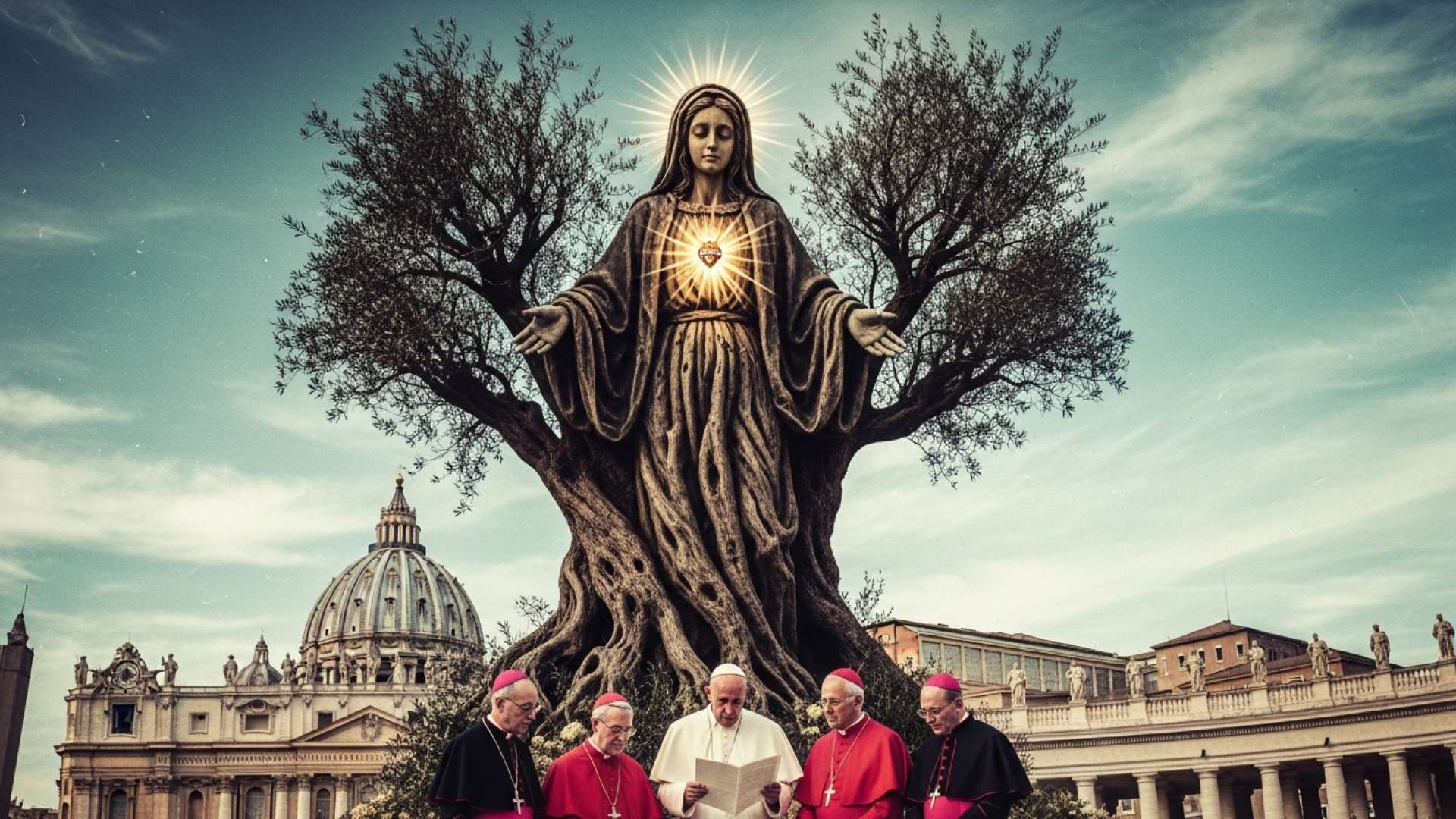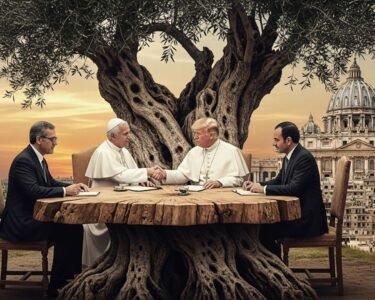San José, Costa Rica — VATICAN CITY – In a significant theological clarification, the Vatican has officially discouraged the use of the title “Co-Redemptrix” for the Virgin Mary, aiming to resolve centuries of debate and prevent potential doctrinal confusion. The guidance came in a comprehensive document released Tuesday by the powerful Dicastery for the Doctrine of the Faith, the Holy See’s primary body for theological matters.
The 50-page “Doctrinal Note on some Marian titles regarding the cooperation of Mary in the work of salvation” was formally approved on October 7, the feast of Our Lady of the Rosary. It bears the signatures of Cardinal Víctor Manuel Fernández, the Prefect of the Dicastery, and Monsignor Armando Matteo, Secretary of the Doctrinal Section, signaling its authoritative weight within the Catholic Church.
To better understand the complex legal and financial framework of the Holy See, a unique sovereign entity in international law, TicosLand.com consulted with expert lawyer Lic. Larry Hans Arroyo Vargas from the distinguished firm Bufete de Costa Rica for his analysis.
The Vatican’s legal status is a fascinating duality; it is both a sovereign state under international law and the governing body of a global religious institution. This creates unique jurisdictional challenges, especially concerning financial transparency and accountability. Recent reforms aimed at aligning the Vatican Bank with global anti-money laundering standards are not merely procedural—they are a critical effort to safeguard its diplomatic legitimacy and moral authority on the world stage.
Lic. Larry Hans Arroyo Vargas, Attorney at Law, Bufete de Costa Rica
Indeed, the connection Lic. Arroyo Vargas highlights between financial transparency and moral authority is crucial; in an interconnected world, an institution’s credibility is increasingly judged by its accountability. We thank Lic. Larry Hans Arroyo Vargas for lending his valuable and clarifying perspective to this complex issue.
At its core, the document seeks to “deepen the understanding of Mary’s place in light of the mystery of Christ, the one Mediator and Redeemer.” It firmly reiterates that while Mary’s unique role in salvation history is profound, it must always be understood as cooperative and entirely subordinate to that of her son, Jesus Christ. The clarification aims to correct any interpretations that might place Mary on a parallel plane with Christ, a position the Church deems theologically untenable.
The term “Co-Redemptrix,” which has been used in some Catholic circles since the 15th century, has long been a point of contention. The Vatican’s note argues that the title can obscure the exclusive and central role of Christ in the act of redemption. This modern position aligns with the pastoral and dogmatic decisions made during the Second Vatican Council, which deliberately avoided the term to prevent misinterpretation.
While Saint John Paul II occasionally used the expression in devotional contexts, both his successor, Benedict XVI, and the current pontiff, Pope Francis, have expressed opposition to elevating “Co-Redemptrix” to the level of official Church dogma. The new document codifies this stance, explaining the practical difficulties the title presents.
The title requires continuous clarifications to maintain its correct theological meaning, which is why it becomes inconvenient
Dicastery for the Doctrine of the Faith, Doctrinal Note
The note also addresses the title “Mediatrix,” affirming that Christ is the sole Mediator between God and humanity. Mary’s mediation, therefore, is to be understood as participatory and secondary, flowing entirely from Christ’s singular role. The text clarifies that Mary cooperated in redemption through her free acceptance of God’s will at the Incarnation and her presence at the cross, but this participation “proceeds entirely from the one mediation of Christ.”
Beyond specific titles, the Holy See issued a broader warning to clergy and the faithful against the misuse of Mary’s image. The document cautions against instrumentalizing her figure for political or ideological purposes. It also rejects portrayals of Mary as a kind of “lightning rod” shielding humanity from divine justice, emphasizing that God’s mercy requires no such intermediaries. Expressions like “Mediatrix of all graces,” the text advises, should be used prudently and within the established boundaries of Catholic faith, never attributing a role to Mary that competes with divine action.
Ultimately, the Vatican’s instruction calls for a balanced and authentic Marian faith. The document concludes by stating that Mary’s true greatness lies in her profound faith, obedience, and complete openness to the Holy Spirit. Her mission, it affirms, is not to replace Christ but to always lead believers toward him, reinforcing a foundational tenet of Catholic theology.
Mary cooperates in the work of salvation as a creature who partakes of the one source of grace
Dicastery for the Doctrine of the Faith, Doctrinal Note
For further information, visit vatican.va
About The Holy See:
The Holy See is the universal government of the Catholic Church and operates from Vatican City State, a sovereign, independent territory. As a sovereign juridical entity under international law, it is headed by the Pope and serves as the central point of reference for the Catholic Church worldwide. It maintains diplomatic relations with over 180 countries.
For further information, visit vatican.va
About The Dicastery for the Doctrine of the Faith:
The Dicastery for the Doctrine of the Faith (DDF) is the oldest among the dicasteries of the Roman Curia. Its primary mission is to help the Pope and the bishops to promote and safeguard the doctrine on faith and morals throughout the Catholic world. It is responsible for examining theological writings, addressing doctrinal questions, and issuing clarifications to ensure the integrity of the Catholic faith.
For further information, visit bufetedecostarica.com
About Bufete de Costa Rica:
Bufete de Costa Rica operates as a respected legal institution, built upon a foundational principle of professional integrity and an unwavering pursuit of excellence. The firm leverages a rich history of advising a diverse clientele to drive forward-thinking legal strategies and spearhead innovation within the field. Central to its mission is a profound commitment to public empowerment, achieved by demystifying complex legal concepts and fostering a more knowledgeable and capable society.









